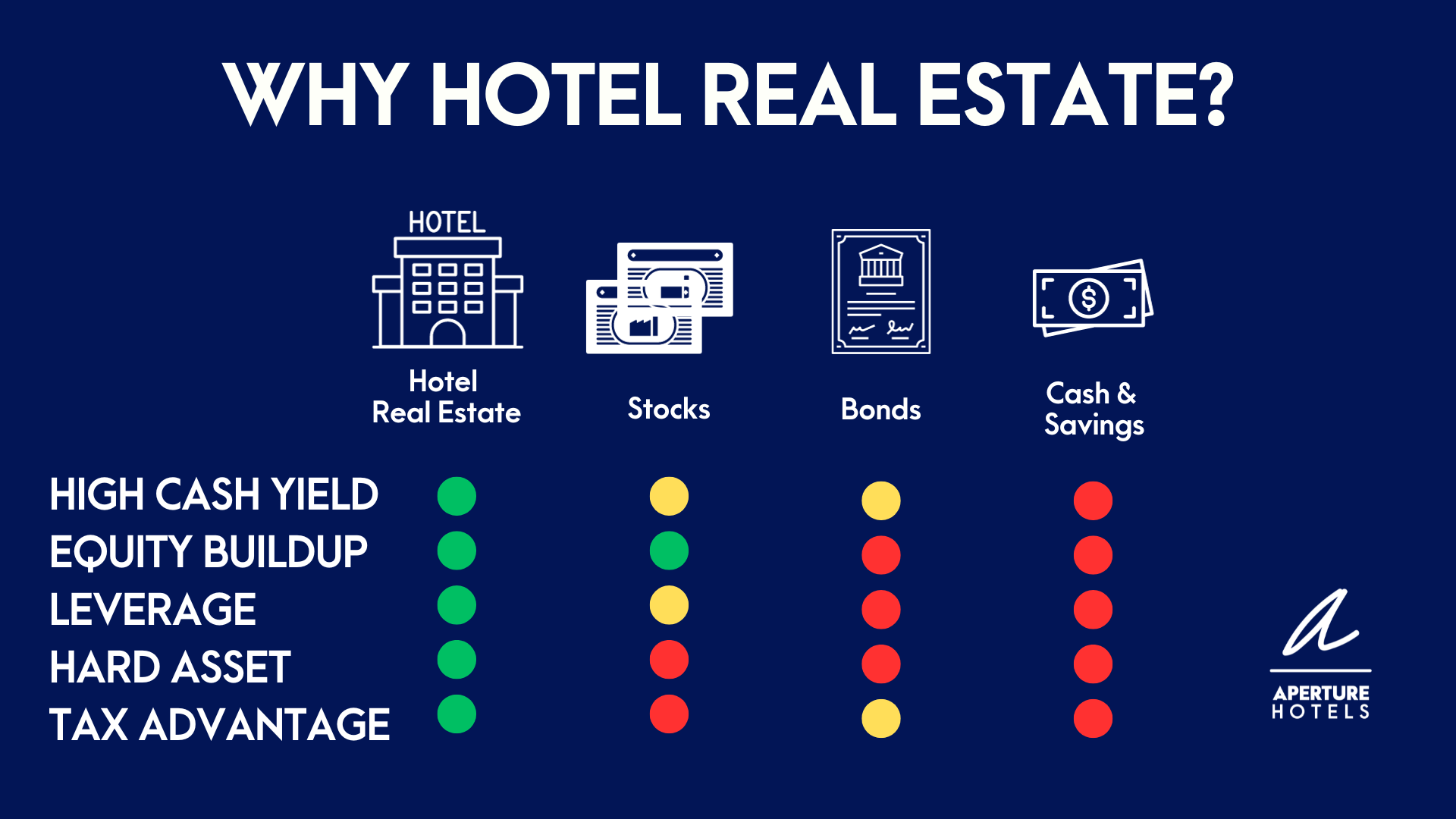The Lucrative Appeal of Hotel Investments: Unveiling the Potential Amidst Changing Landscapes
By Charles E. Oswald
In the world of investment, opportunities often emerge from disruption, and the hospitality industry has proven to be no exception. While the pandemic cast a dark shadow over the hotel sector, it also paved the way for a strategic investment approach that capitalizes on the intrinsic potential of this asset class. Mismanaged, under-marketed, and under-valued assets are being reimagined as lucrative investments, with a focus on operational efficiency, repositioning, and capital appreciation. There is a strong case to be made for considering hotels as an important addition to diversified portfolios.
“90% of all millionaires become so through owning real estate.” – Andrew Carnegie
Why Hotels?
Once considered a niche asset class, the evolution of hotel investments into a mainstream investment is punctuated by the fact that hospitality-focused funds have secured substantial capital for investments, exceeding $30 billion. According to a recent report by JLL, 81% of hotel investors expect to be net buyers in 2024, which is the highest total ever recorded going back to the origin of this report in 2000. Why is that?
· It is anticipated that the era of rising interest rates is now behind us as the economy makes the long-anticipated soft landing.
· In an ever-connected world, the long-term trends favor the hospitality sector.
o Pre-pandemic performance showcased the hospitality sector's strength, with higher internal rates of return (IRR) compared to the MSCI US REIT index over both short- and long-term periods.
o This sector outperformed the S&P 500 and U.S. Aggregate Bond Index since the turn of the century, demonstrating robust risk-adjusted returns and higher total returns than bonds.
o Over the past three decades, hotels have consistently delivered an 8.0% annual total return with significantly lower volatility than stocks.
o This low correlation with stocks (0.17) and negative correlation with bonds (-0.05) has served to diversify investment portfolios, accompanied by a steady average annual yield of 7.2%,surpassing the performance of stocks and bonds alike.
A good hotel investment can deliver reliable yields, hedge against inflation, tax advantages, and passive income with the right management handling your investment.
Why now? Because it’s all about the basis.
The Fed has increased rates 11 times since March of 2022.This sudden rise in the cost of debt is creating a pressure cooker for some borrowers. The 2024 transaction market will be driven by impending debt maturities, expiring fund duration, and interest rate pressure that will result in erosion of value. Opportunistic buyers are circling.
“Landlords grow rich in their sleep.”– John Stuart Mill
Strategic Investment Approach
The strategic approach to investing in hotels has four steps: identification, value creation, management, and optimal exit, with management playing a particularly critical role.
Step One: Identification
Many investors are seeking assets with a history of promising pre-pandemic cash flow histories situated in submarkets with trending demand growth. Identifying under-managed or undervalued assets that align with the investor's core competencies presents avenues for more substantial returns.Emphasizing premium locations, unique value propositions, and strong post-COVID recovery can further accentuate investment feasibility. It’s worth noting that coastal cities like New York, DC, Los Angeles, and San Francisco have ceded ground to sunbelt cities like Miami, Dallas, Houston, Austin, Phoenix, and Nashville as they become more economically diverse powerhouses. Customers are leaning into properties with an experiential, lifestyle edge while many investors are leaning toward the increasingly saturated extended stay segment,in favor of lower operating costs. Acquiring historically cash-flowing properties at a considerable discount to replacement costs is the ideal scenario.
Step Two: Value Creation
Whether the strategy is to turn around a mismanaged asset through operational execution, rebranding or repositioning; the goal is to stimulate market penetration, average daily rate (ADR) growth, enhance operational efficiencies, and drive asset appreciation. Off-market majority buyouts, debt replacements, and recapitalizations stemming from COVID distress,debt pressure, investor fatigue, or corporate restructurings offer opportunities for value creation.
Step Three: Management
Employing professional management expertise and active asset management is the only way to ensure the realization of operational and financial goals. Whichever way you decide to approach value creation, the ability to execute the strategy swiftly is key, repositioning the asset and setting the stage for occupancy and rate premium improvements. Selection of the right management company might be the single, most important piece of due diligence for any investor.
Step Four: Optimal Exit
Timely exit maximizes investor returns, culminating the investment cycle. This requires paying close attention to the micro- and macroeconomic forces at play in your hotel's particular submarket.
“Don’t wait to buy real estate, buy real estate and wait.” – T. Harv Eker
Unlocking Potential Amidst Changing Tides
Hotel investments have emerged as an enticing prospect,driven by strategic approaches that revitalize undervalued assets and capitalize on changing market dynamics. The sector's track record of consistent returns, diversification benefits, and strong post-COVID recovery positions hotels as a compelling addition to investment portfolios. As the hospitality landscape continues to evolve, astute investors are recognizing the lucrative appeal of hotel investments, aligning with the evolving themes of market transformation and sustainable financial growth.


.png)
.png)